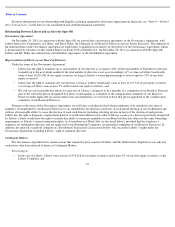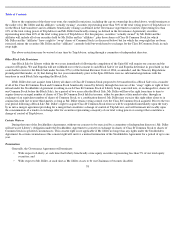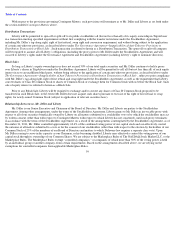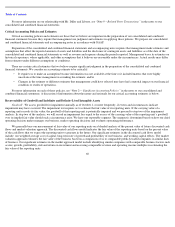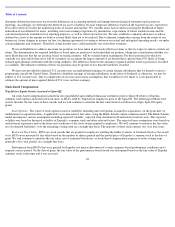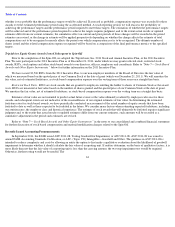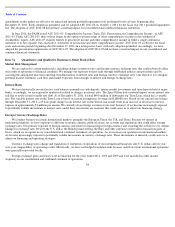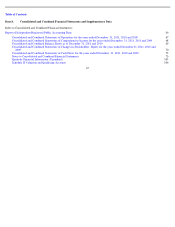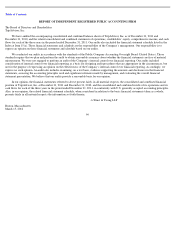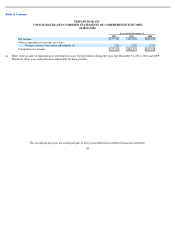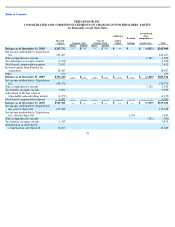TripAdvisor 2011 Annual Report Download - page 64
Download and view the complete annual report
Please find page 64 of the 2011 TripAdvisor annual report below. You can navigate through the pages in the report by either clicking on the pages listed below, or by using the keyword search tool below to find specific information within the annual report.
Table of Contents
For more information on our relationship with Mr. Diller and Liberty, see “Note 9 – Related Party Transactions ” in the notes to our
consolidated and combined financial statements.
Critical Accounting Policies and Estimates
Critical accounting policies and estimates are those that we believe are important in the preparation of our consolidated and combined
financial statements because they require that management use judgment and estimates in applying those policies. We prepare our consolidated
and combined financial statements and accompanying notes in accordance with GAAP.
Preparation of the consolidated and combined financial statements and accompanying notes requires that management make estimates and
assumptions that affect the reported amounts of assets and liabilities and the disclosure of contingent assets and liabilities as of the date of the
consolidated and combined financial statements as well as revenue and expenses during the periods reported. Management bases its estimates on
historical experience, where applicable, and other assumptions that it believes are reasonable under the circumstances. Actual results may differ
from estimates under different assumptions or conditions.
There are certain critical estimates that we believe require significant judgment in the preparation of the consolidated and combined
financial statements. We consider an accounting estimate to be critical if:
For more information on each of these policies, see “Note 2— Significant Accounting Policies ” in the notes to our consolidated and
combined financial statements. A discussion of information about the nature and rationale for our critical accounting estimates is below.
Recoverability of Goodwill and Indefinite and Definite-Lived Intangible Assets
Goodwill . We assess goodwill for impairment annually as of October 1, or more frequently, if events and circumstances indicate
impairment may have occurred. The impairment test requires us to estimate the fair value of its reporting units. If the carrying value of a
reporting unit exceeds its fair value, the goodwill of that reporting unit is potentially impaired and we proceed to step two of the impairment
analysis. In step two of the analysis, we will record an impairment loss equal to the excess of the carrying value of the reporting unit’s goodwill
over its implied fair value should such a circumstance arise. We have one reportable segment. The segment is determined based on how our chief
operating decision maker manages our business, makes operating decisions and evaluates operating performance.
We generally base our measurement of fair value of our reporting units on a blended analysis of the present value of future discounted cash
flows and market valuation approach. The discounted cash flows model indicates the fair value of the reporting units based on the present value
of the cash flows that we expect the reporting units to generate in the future. Our significant estimates in the discounted cash flows model
include: our weighted average cost of capital; long-term rate of growth and profitability of our business; and working capital effects. The market
valuation approach estimates the fair value of the business based on a comparison of us to comparable publicly traded companies in similar lines
of business. Our significant estimates in the market approach model include identifying similar companies with comparable business factors such
as size, growth, profitability, risk and return on investment and assessing comparable revenue and operating income multiples in estimating the
fair value of the reporting units.
60
•
It requires us to make an assumption because information was not available at the time or it included matters that were highly
uncertain at the time management was making the estimate; and/or
•
Changes in the estimate or different estimates that management could have selected may have had a material impact on our financial
condition or results of operations.







